PROTECT YOUR DNA WITH QUANTUM TECHNOLOGY
Orgo-Life the new way to the future Advertising by AdpathwayThe search for new garden plants is endless. Inevitably, your new specimens will grow old and lose their luster. You’ll want more new ones to liven up the space with bright blooms, textured leaves, and tall stems.
Choose local plants, like the Copper Canyon daisy, for a fresh perspective in the garden. This Arizona native species requires less care than non-native plants. It thrives in its native range without much irrigation.
Regardless of where you live, you’ll enjoy this daisy’s sunshine-yellow blooms and finely divided green leaves. Try it in a container, plant it in the border, or use it in a pollinator garden. It’ll attract beneficial pollinators and predatory insects into your yard.
Copper Canyon Daisy Overview
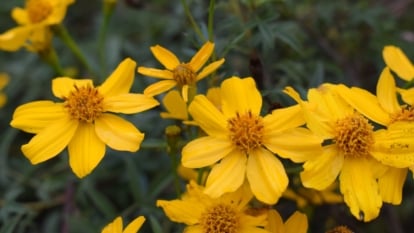
|
Plant Type Perennial shrub Family Asteraceae Genus Tagetes Species lemmonii |
Native Area Arizona, Northern Mexico Exposure Full sun to partial shade Height 4-6’ Watering Requirements Average |
Pests & Diseases Few to none Maintenance Average Soil Type Well-drained Hardiness Zone 8-11 |
What Is It?
The Copper Canyon daisy is a marigold! Marigolds are in the daisy family, Asteraceae, which is why this perennial shares two common names. It goes by a few names, like Mexican bush marigold, Lemmon’s marigold, and mountain marigold. All names refer to the same plant.
Native Area
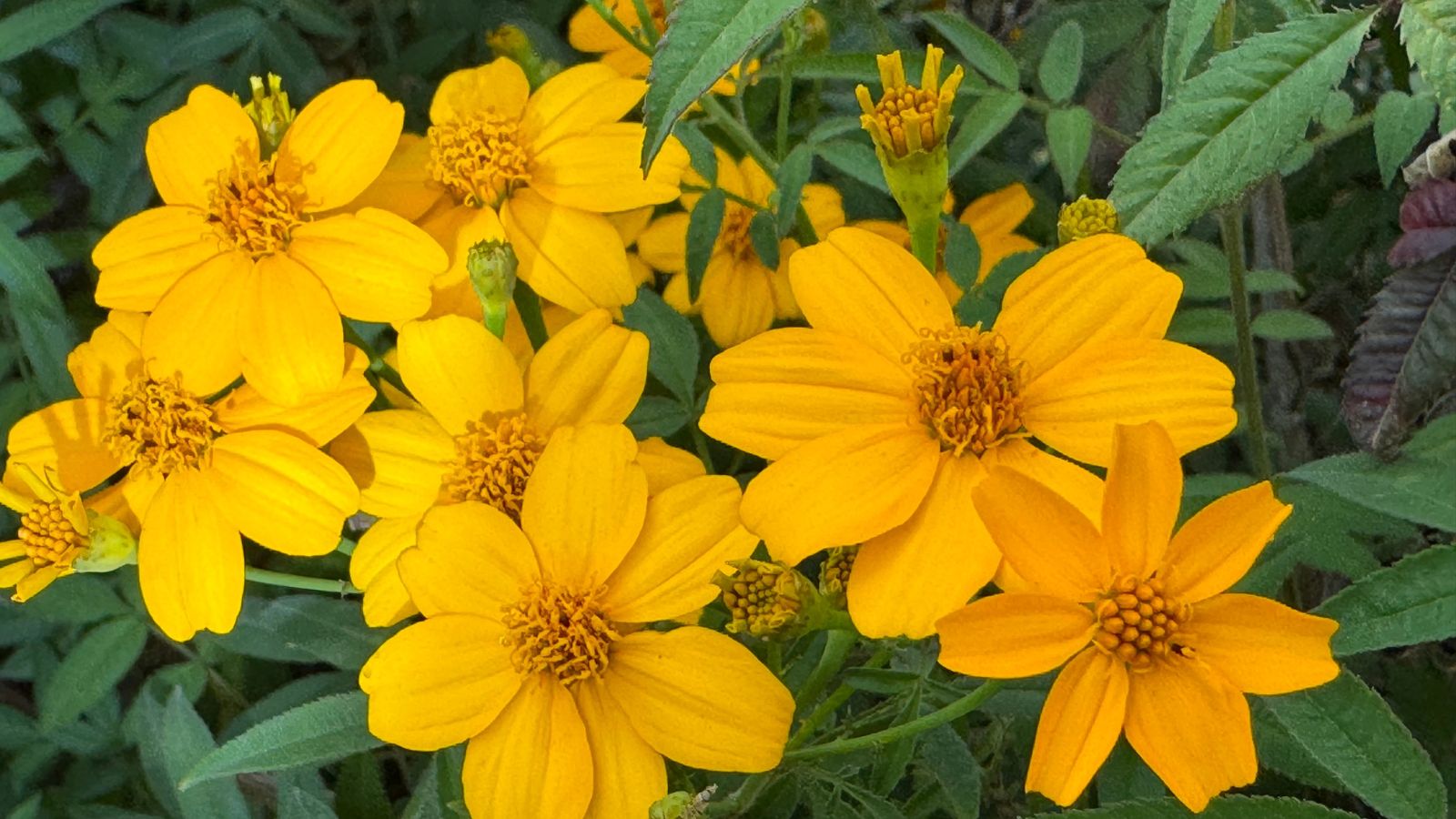 It grows wild in mountainous regions near bodies of water.
It grows wild in mountainous regions near bodies of water. The best way to identify a plant is with its scientific name. This daisy’s scientific name is Tagetes lemmonii. The species name lemmonii honors a couple who found the plant, Sara Plummer and John Gill Lemmon. They discovered it while exploring the Santa Catalina Mountains of Arizona.
The perennial shrub is native to southern portions of Arizona and northern regions of Mexico. It likes well-drained, gritty soil and warm temperatures that are common in its native range. It grows wild in mountainous regions near bodies of water, like streams, creeks, and rivers.
Characteristics
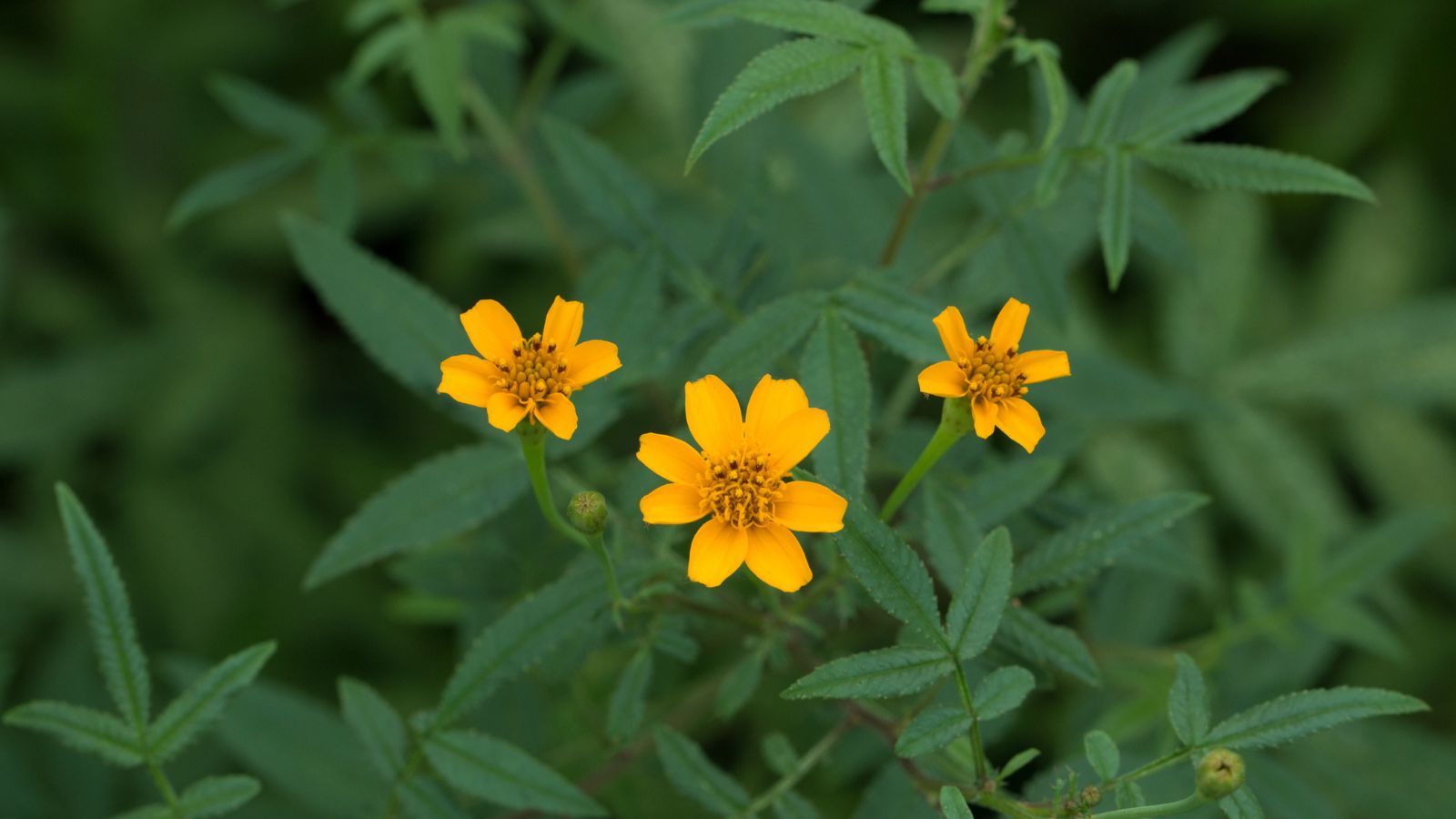 Mature stems can reach up to six feet tall.
Mature stems can reach up to six feet tall.Like other marigolds, this species features bright yellow blooms that are compound flowers. This means that each flower contains multiple small blossoms inside its center. The blooms are smaller than other marigolds, and they look beautiful when they erupt en masse.
Below the small yellow blooms lie aromatic, divided leaves that are lacey in appearance. They’re incredibly decorative, looking like tickseeds, cosmos, or love-in-a-mist. As the perennials age, they grow wider and taller. They may fill in empty spaces around your other plants and spread throughout the garden.
Unlike most marigolds, the Copper Canyon daisy survives the winter in USDA hardiness zones 8 through 11. It’s evergreen and extremely cold-tolerant, though it may suffer damage after a hard frost. New growth will resprout quickly from the roots, and the mature stems can reach up to six feet tall.
Planting
This Arizona native plant is common in nurseries around the U.S., mainly because it’s a hardy alternative to cold-tender marigolds. It’s less common in colder climates, though you can find seeds or potted Copper Canyon daisies online if they’re hard to find in your region.
Growing from Seed
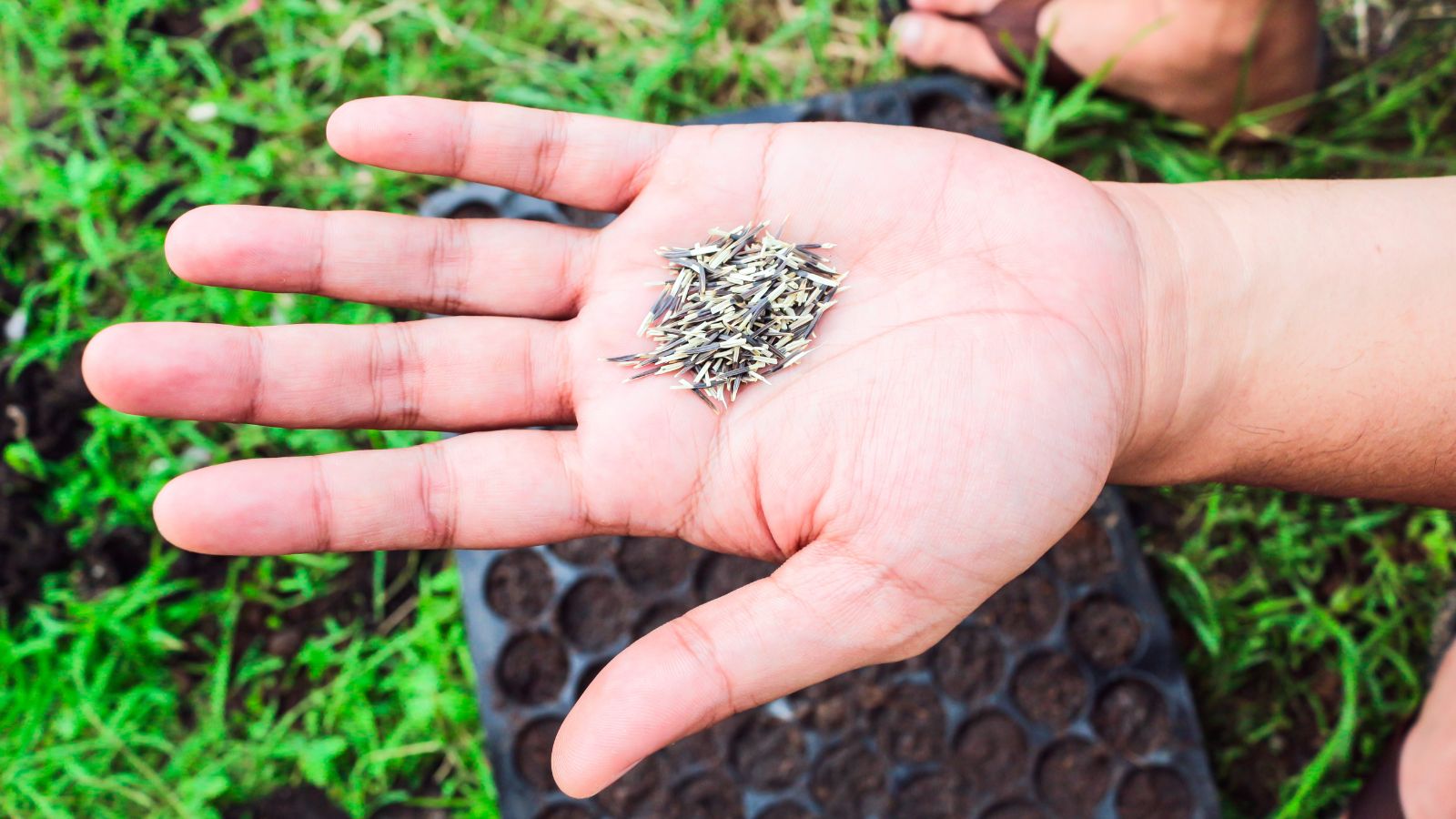 Soak the seeds before planting.
Soak the seeds before planting. As with other daisies, Copper Canyon grows readily from seeds. You may start them indoors for transplanting in spring, or direct sow them outdoors after the last frost date. Start seeds indoors if you have a short growing season, as you can cheat the weather and grow them while frosts are still common outside.
First, soak the seeds for 24 hours before planting them. Then, plant them a quarter inch deep in moist potting soil. Keep them moist, but not soggy, until they germinate. They grow best under grow lights or near a bright window. Let the seedlings flourish, and transplant them outdoors after the last frost date.
The process is similar for direct sowing. Soak the seeds, then prepare the soil for planting. Rake it so it’s even and sow seeds a quarter inch deep. Water them occasionally to keep them moist while they sprout. They should appear a week or two after planting.
Transplanting
 Keep the roots moist for a few weeks after transplanting.
Keep the roots moist for a few weeks after transplanting.The best seasons for transplanting are spring and fall. Safely move your Copper Canyon daisies outdoors in spring after the last average frost date. In fall, make sure you get the daisies in the ground at least two months before your first frost date. The earlier the better, as you want your specimens to be hardy enough to survive the winter.
Start the process by preparing a hole for planting. Dig a hole as deep and twice as wide as the plant’s rootball. Remove your daisy from its container, then set it down in the hole. You may loosen some of its roots to help it establish in your garden’s soil.
Pile the dug-out soil around the roots until you fill the hole. Then, water it well with a watering can or hose. Add more dirt on top if the surface sinks after watering. Keep the roots moist for a few weeks after planting so they adapt to your garden’s soil.
How to Grow
With proper care and good exposures, Copper Canyon daisies thrive throughout the year. They work well as summer annuals in regions where they’re not frost-tolerant. Plant them alongside your tomatoes and onions, and they’ll deter pests and attract pollinators!
Light
 Shade results in leggy growth and few flowers.
Shade results in leggy growth and few flowers. Copper Canyon daisies grow best with full sun or partial shade. Give them between three and eight hours of daily direct sunlight. In warm regions like gardens in hardiness zone 11, the daisies will benefit from partial shade for protection against extreme heat.
The less sun your daisies receive, the more likely they are to grow leggy and sparse. Move container specimens to a brighter location, and consider pruning taller trees and shrubs to give in-ground perennials sufficient sunlight.
Water
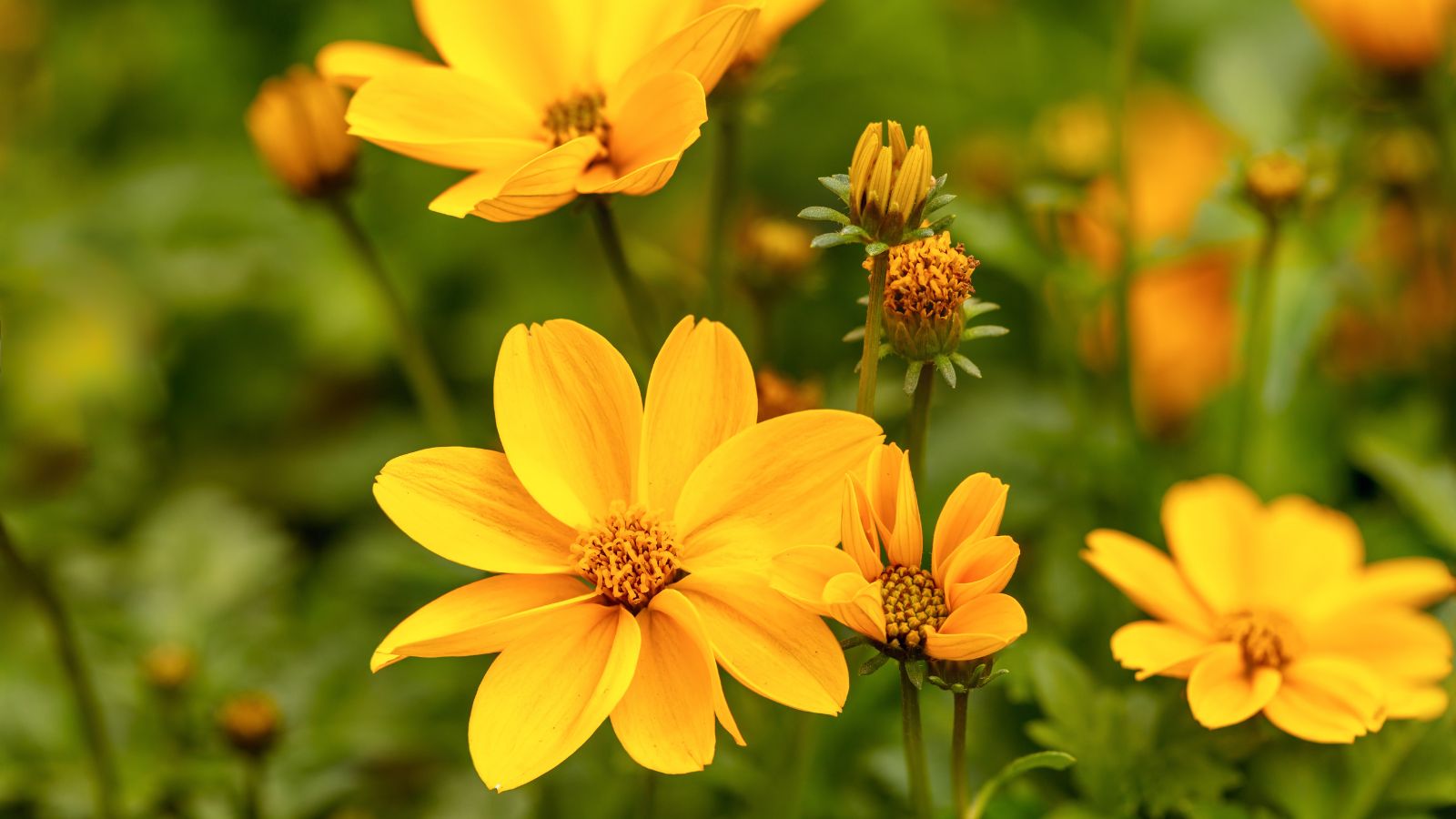
These daisies are drought-tolerant after they establish themselves. Their roots need regular watering as they adapt to the garden. Then, they tolerate infrequent watering from spring through fall. Water them every few weeks to help them flourish.
The perennials need less water in wet zones outside of their native range, like the Pacific Northwest. Keep them on the dry side. They’ll work well in rock gardens and sunny borders that receive occasional irrigation.
Temperature
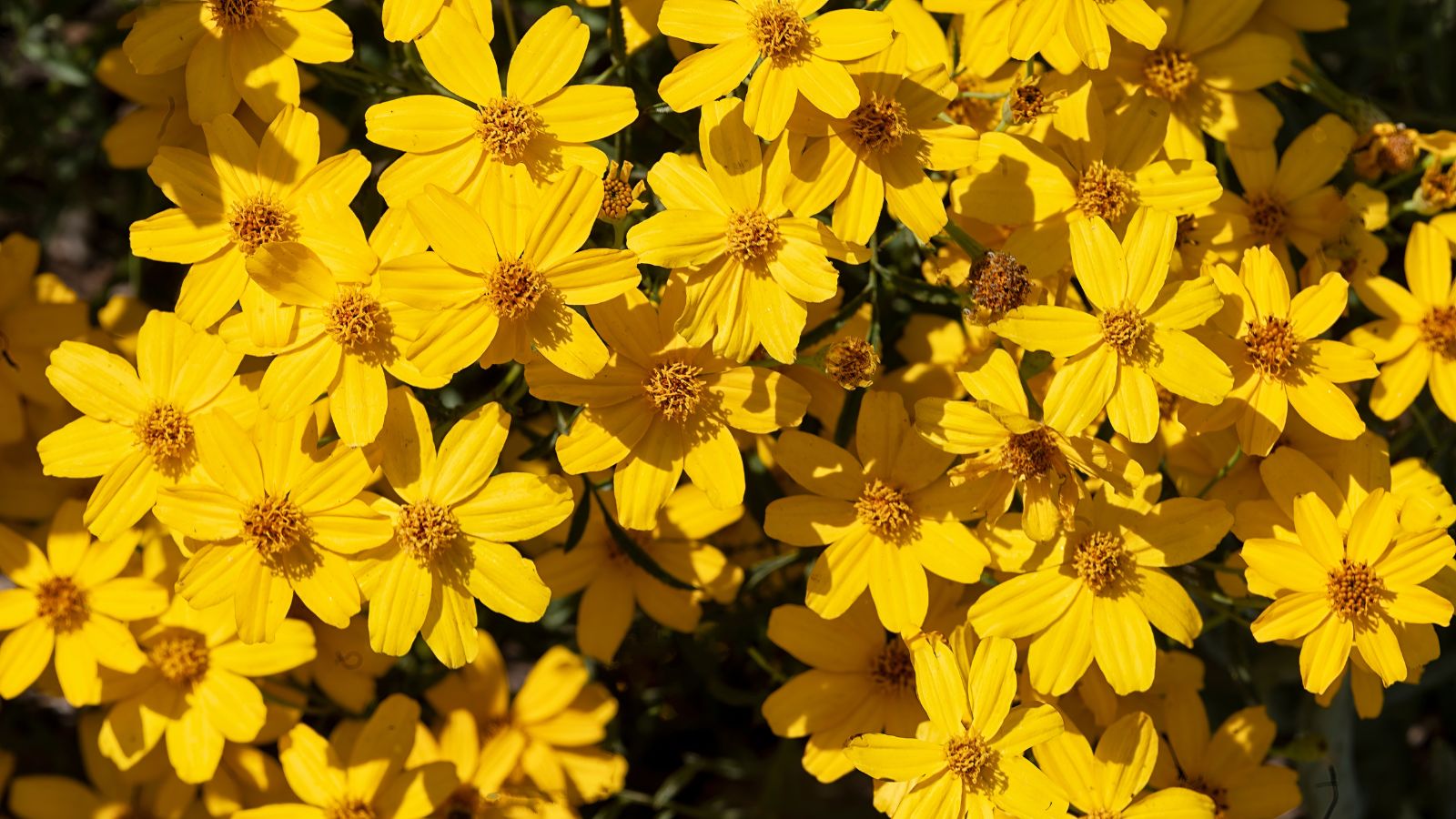 Protect plants from extreme heat and cold.
Protect plants from extreme heat and cold. Unlike other daisies, these are frost-tolerant from 20°F to 25°F (-7°C to -4°C). They’ll suffer after harsh frosts in winter, though they’ll often rebound with fresh growth from the ground. Protect their roots during the cold months by adding mulch, like compost, on top of the soil. Layer it two to three inches thick.
Similarly, protect these perennials from excessive heat in summer. They originate from mountainous regions where temperatures are hot but not extreme. Give your Copper Canyon daisies partial shade if your garden often reaches temperatures above 100°F (38°C).
Soil
 Use well-draining soil to prevent rot.
Use well-draining soil to prevent rot. Well-drained soil is the best kind for this daisy. Its roots dislike soggy soils, and they prefer gritty, sandy sites. Amend the site with compost or grit if it’s too dense, and rake it in to help it break up the ground.
Container specimens need adequate drainage to thrive. Use a free-draining potting soil mix, like one made for cacti and succulents. You can boost the drainage by adding perlite, vermiculite, or pumice into the blend.
Fertilizing
 These flowers don’t need much feeding.
These flowers don’t need much feeding. Due to their perennial nature, these daisies may need some extra nutrients to continue growing well every year. They don’t need too many nutrients, and you don’t want to overfertilize. Feed your daisies with a quarter dose of organic fertilizer.
Mix liquid fertilizers with water to dilute them, and cut down powder fertilizer portions to a quarter. Feed in spring when new growth occurs, and again right before flowers appear. Use a well-balanced fertilizer with equal or near-equal amounts of nitrogen, phosphorus, and potassium.
Maintenance
 They don’t require heavy pruning.
They don’t require heavy pruning. Overgrown daisies benefit from trimming throughout the growing season to keep them neat and tidy. Use hedge trimmers or snips to trim the ends. After a harsh frost, the top growth will die back. You’ll want to trim the dead stems after new growth appears.
Avoid completely cutting back your specimens, as the act will reduce the number of flowers that appear. This daisy tends to flower a bit in spring, and again in full force during autumn. Wait to trim it until after the flowers fade to preserve the blooms.
Propagation
Propagate these marigold relatives with seeds, cuttings, or divisions. Which method is best for you depends on your goals and your garden’s setup. I like to take cuttings for quick propagation and store seeds as a backup. Division works best for overgrown, crowded daisies.
Cuttings
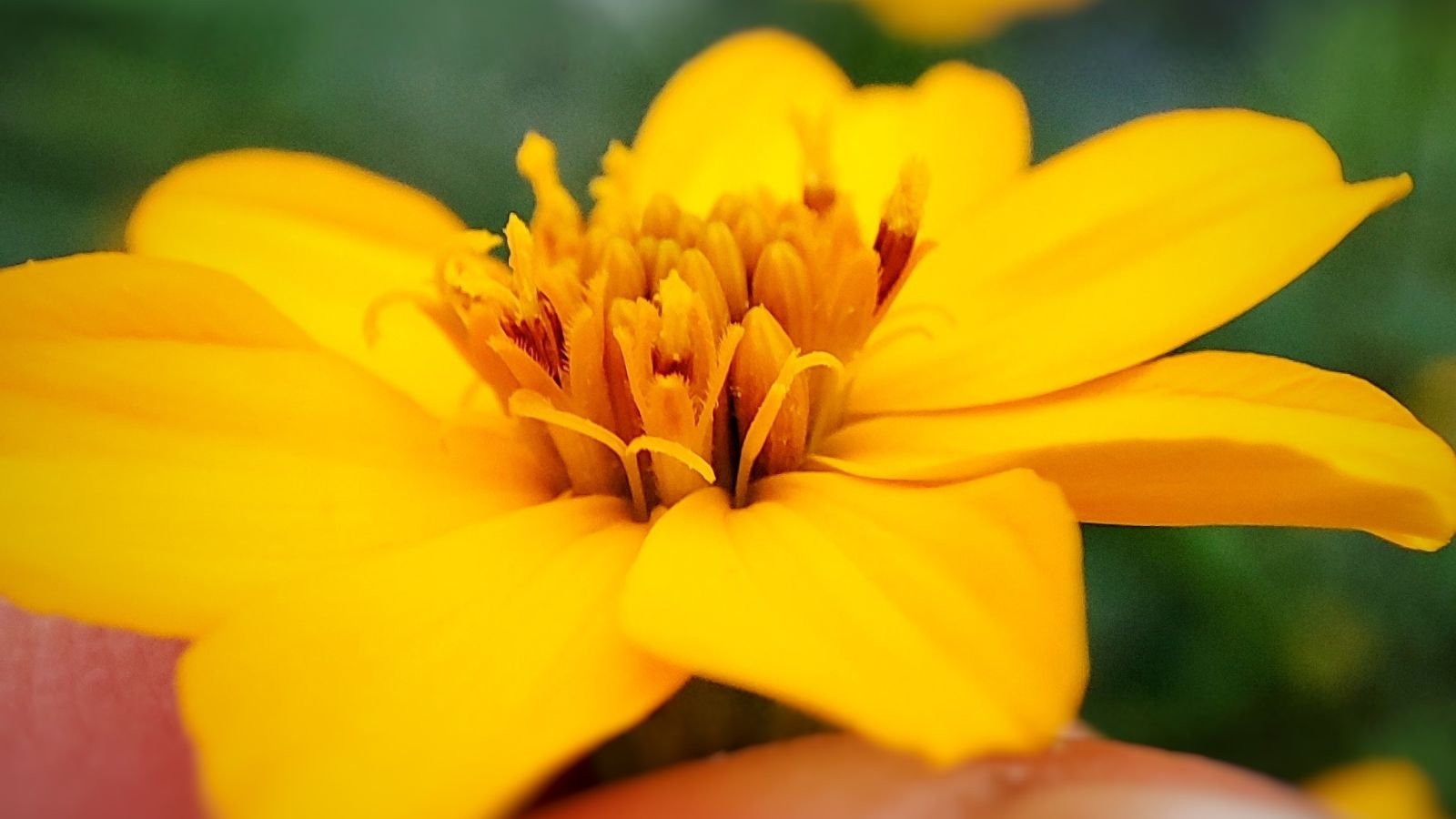 Grow new plants from cuttings.
Grow new plants from cuttings. Take soft cuttings during the growing season. Snip four to six-inch portions of the stems off the main plant, then remove their blooms and lower leaves. Stick the cut stems into pots with potting soil, and keep them moist and humid while they’re rooting.
To help, add a humidity dome on top of the daisy cuttings. A dome traps moisture, allowing the leaves to take in moisture while the roots are still forming. You may remove the dome after roots form.
Water the cuttings to keep them moist, and let them stay in their pots until new growth appears. Then, transplant them into the garden and let them spread.
Division
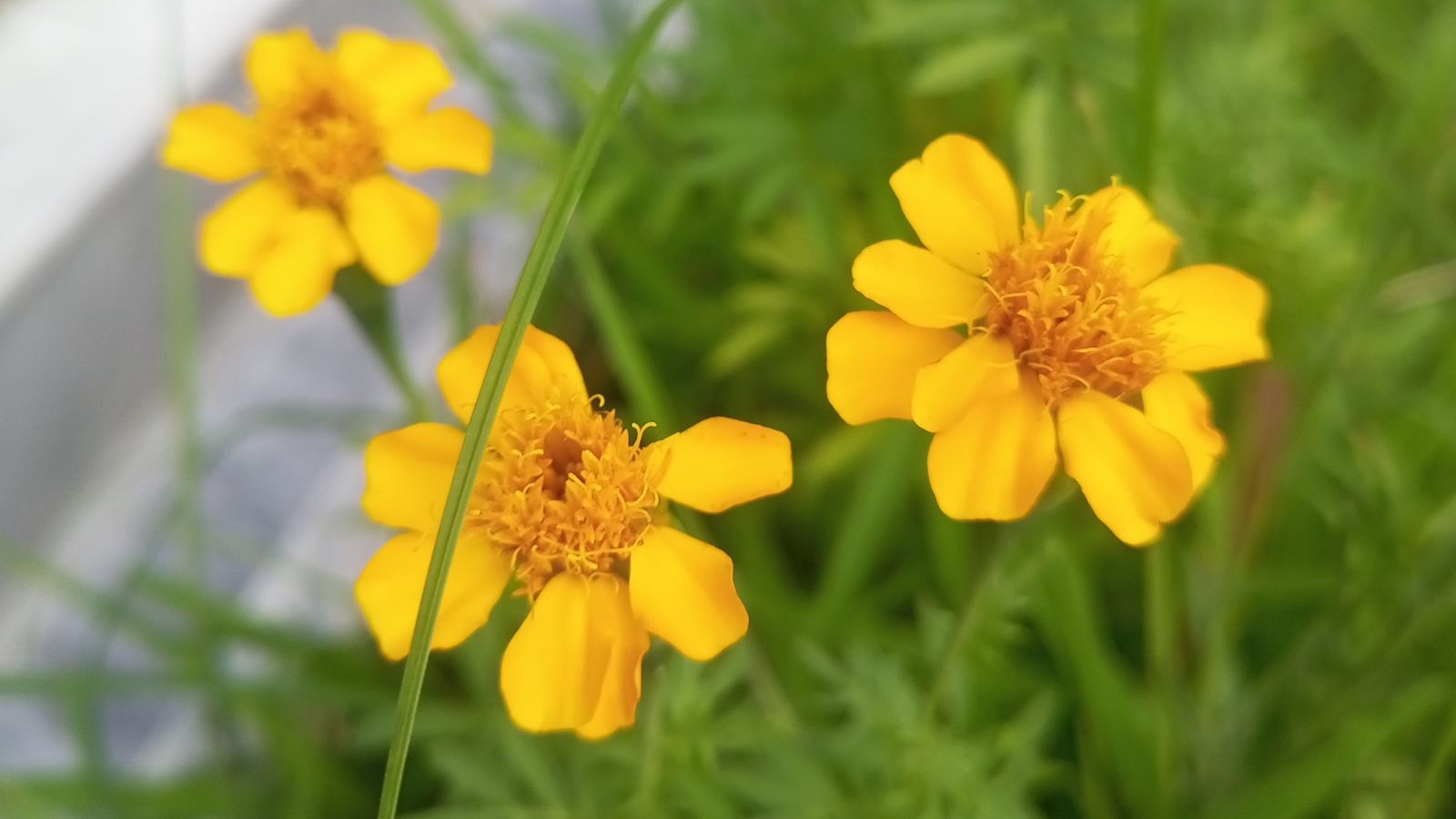 Divide in spring or fall to prevent stress.
Divide in spring or fall to prevent stress. Division is a technique that creates multiple daisies from a single overgrown specimen. It’s best to divide in spring or fall when the weather is mild and relatively cool. For quick division, stab a spade into a portion of the plant and dig it out. Replant the portion elsewhere, and fill in the hole with soil.
If you’d like to divide the entire plant, you’ll want to dig out the perennial to take a closer look at the roots. Dig around the perimeter of the plant, and heave it out of the ground with your shovel or spade. Set the plant aside to inspect it.
Using a knife or sharp tool, separate the plant into two or more new pieces. Ensure each one has sufficient roots and stems so they adapt well after transplanting. Dig holes, plant them, and keep them moist while they establish.
Seed Saving
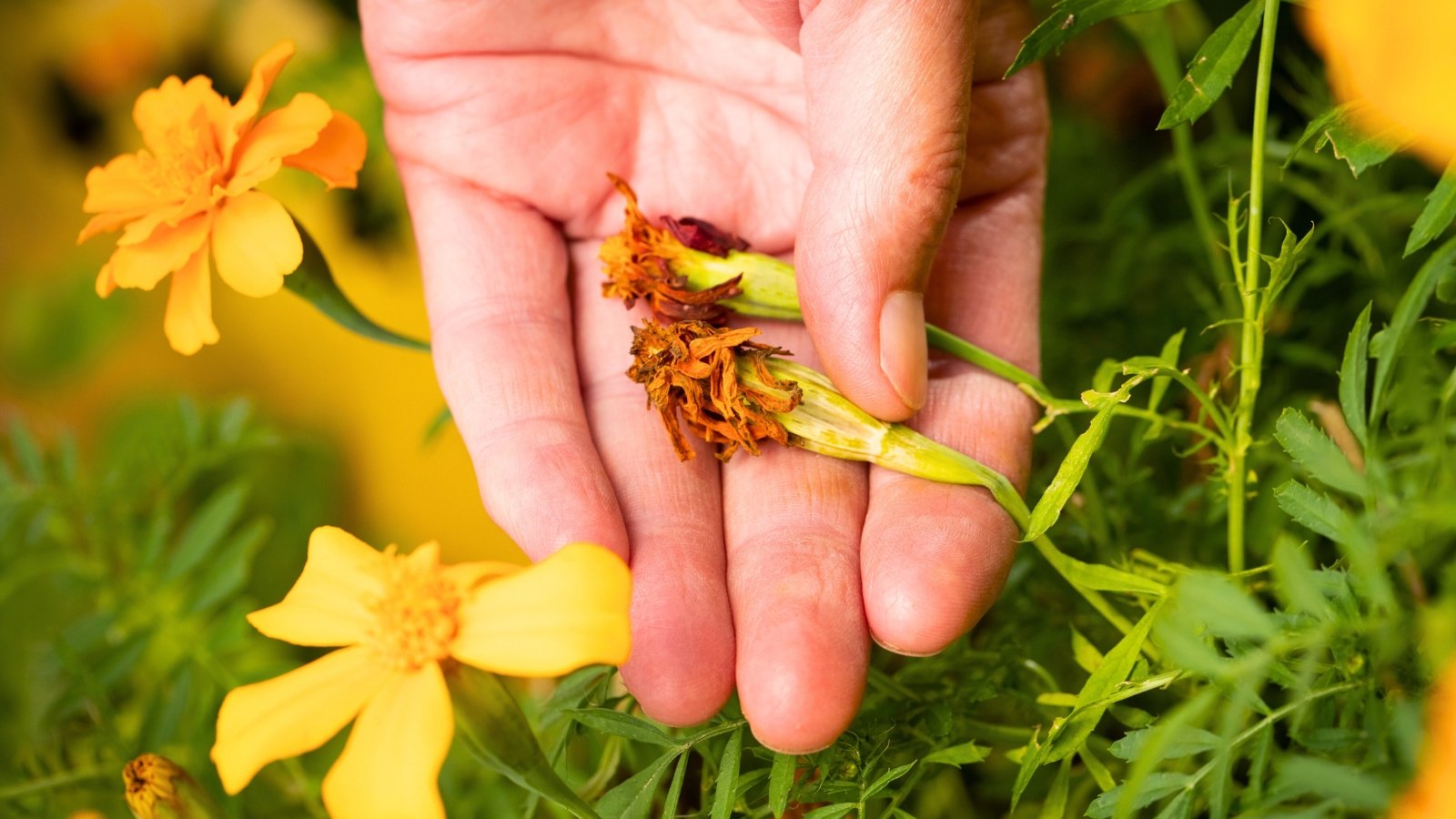 Let flowers go to seed to collect them.
Let flowers go to seed to collect them. Save seeds so you always have a way to grow new seedlings! Start by locating seed heads that form from summer through fall. They appear after the flowers fade, and they contain seeds that sprout into new seedlings.
Pick the seed heads off, though you may want to be careful. Some people react to the strong, fragrant leaves when they touch them. Use gloves and pruners if you have sensitive skin.
Let the seed heads dry fully, then pick the seeds out from inside them. Place the dry seeds in a container, and store them in a cool, dark location until you’re ready for planting.
Popular Varieties
The species Tagetes lemmonii is the most common garden specimen, though a few other varieties are sold online and at nurseries. Try one of these two if you have small beds, as their dwarf nature helps them fit into tight spaces.
‘Little Lemon’
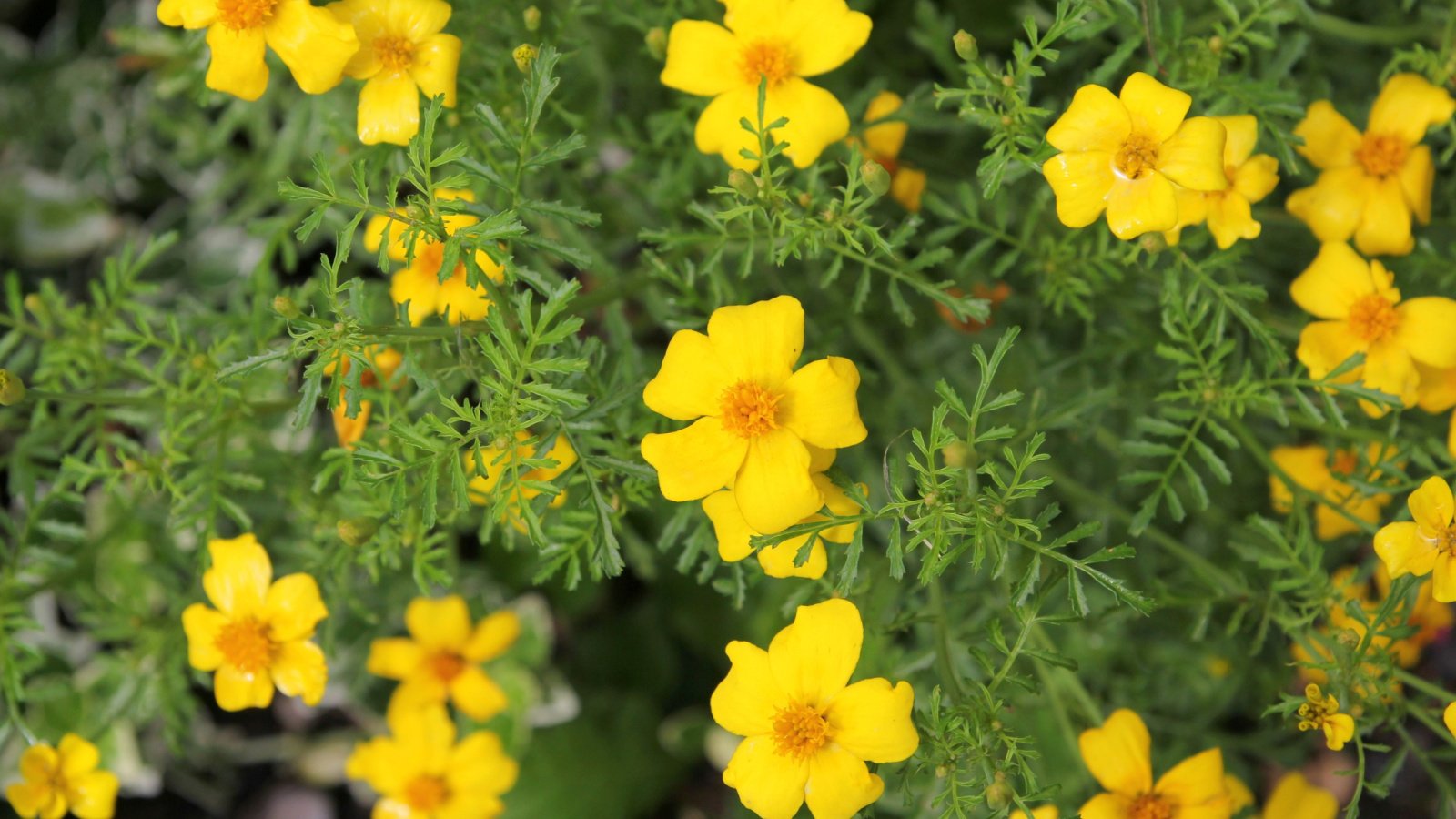 This compact variety is perfect for containers.
This compact variety is perfect for containers.This small Copper Canyon daisy cultivar stays under a foot tall! It’s perfect for planting in front of taller perennials that you don’t want to block. Pair it with red flowering plants for a tropical flair, or use purple blooms for a lovely contrast of complementary colors.
‘Little Lemon’ needs growing conditions similar to the species. Protect it from harsh frosts, and give it plenty of heat and sunlight from spring through fall.
‘Compacta’
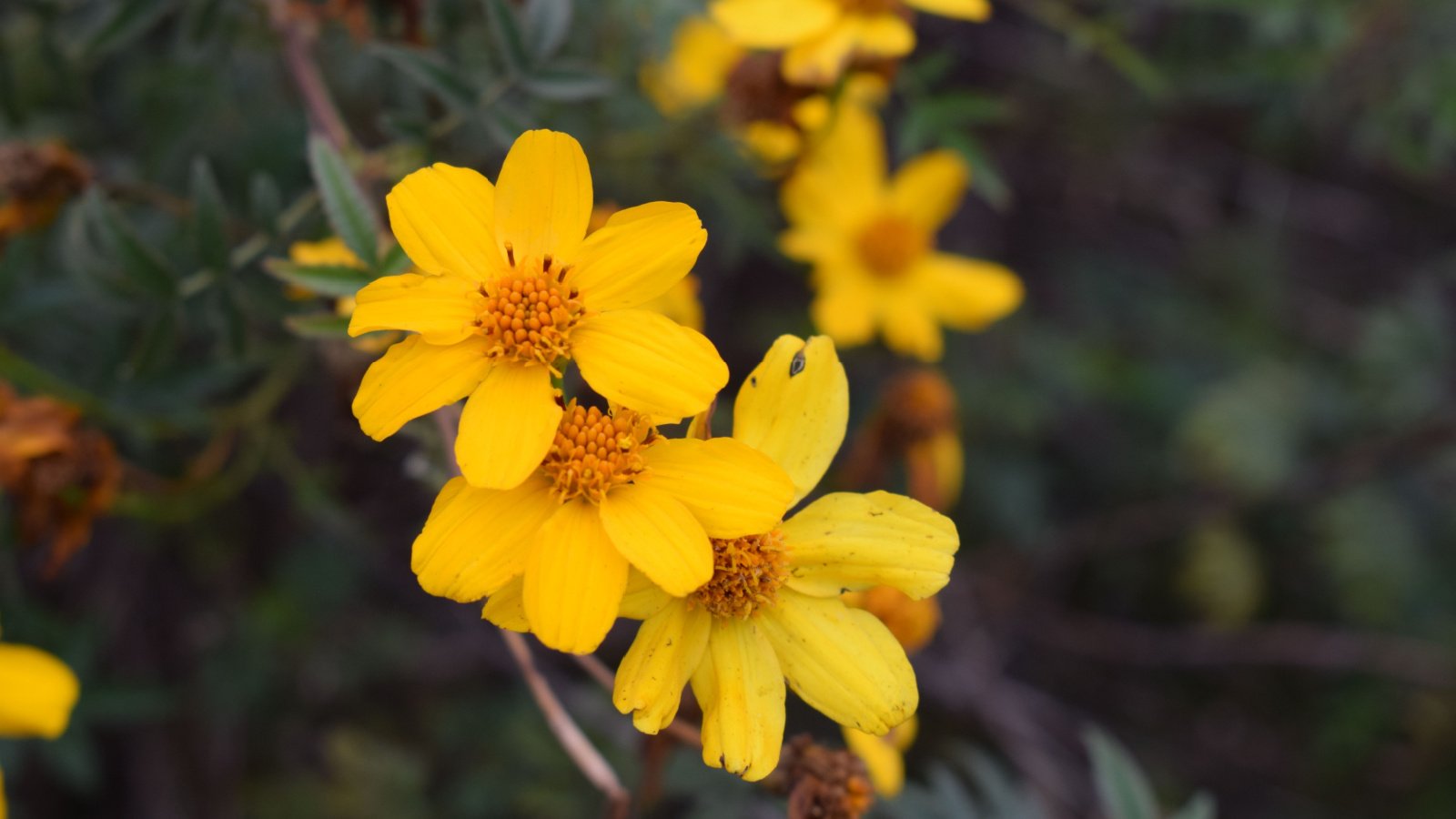 This variety grows slightly taller with bright yellow blooms.
This variety grows slightly taller with bright yellow blooms. ‘Compacta’ is similarly small in stature, though it grows taller than ‘Little Lemon.’ It stays between two and three feet tall and wide. Let it roam in an ornamental bed, or keep its spread contained with containers and planters.
‘Compacta’ is the in-between option. It’s not as tall as the species and not as small as ‘Little Lemon.’
Common Problems
Copper Canyon daisies don’t have serious pest or disease issues. Its leaves are aromatic and pungent, and they deter pests. You may see root rot symptoms in soggy soils, and you’ll occasionally see aphids or ants on unhappy daisies.
Pests
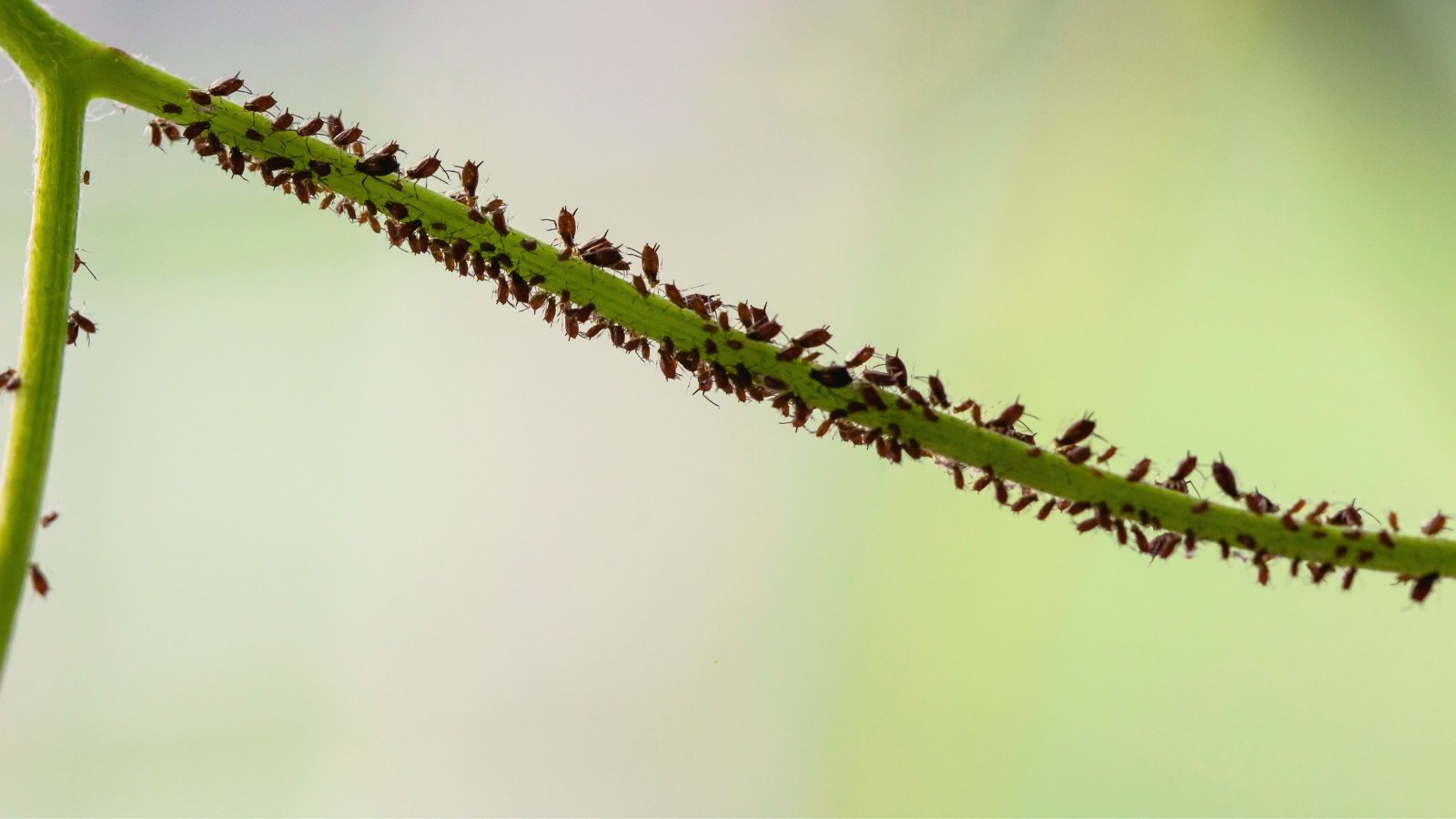 Aphids are a common concern.
Aphids are a common concern. Ants and aphids form partnerships. The ants farm the aphids for the sugars they secrete out of their bodies, and the aphids let it happen. You may see ants and aphids on dry daisies. If you see these pests, spray them off with water. Spray daily until they disappear completely.
Voracious slugs may eat young seedlings in spring and fall. Trap the slugs with a beer or dough slurry trap to remove them from the garden.
Diseases
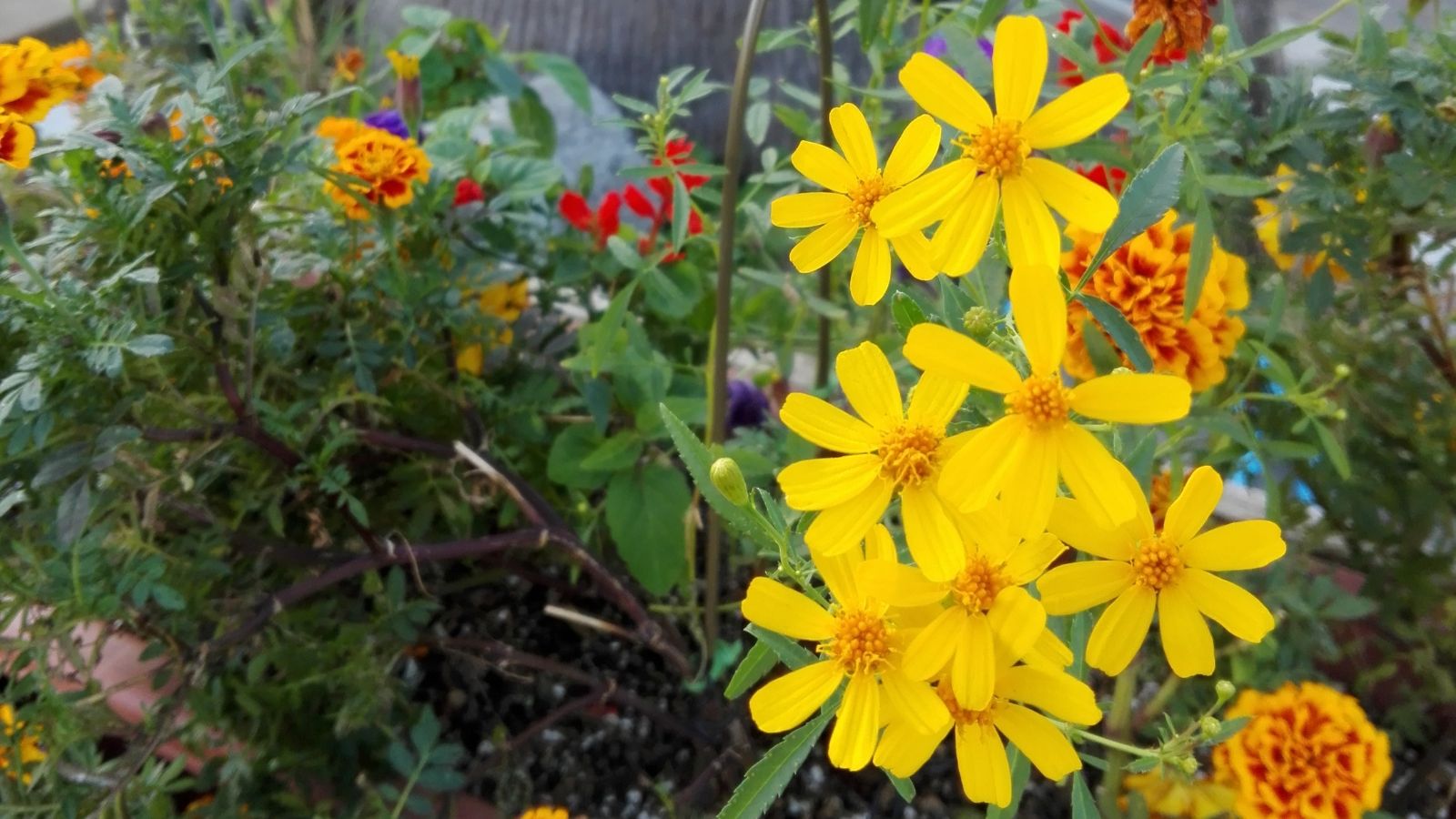 Root rot is one of the most common problems.
Root rot is one of the most common problems. Root rot is common in soggy, wet sites. Protect your daisies by growing them in containers or by amending the site. Use drainage-boosting amendments like decomposed granite or compost.
If root rot occurs, stop all watering and remove dead stems and leaves. New sprouts may grow if the rot isn’t severe.


 19 hours ago
1
19 hours ago
1
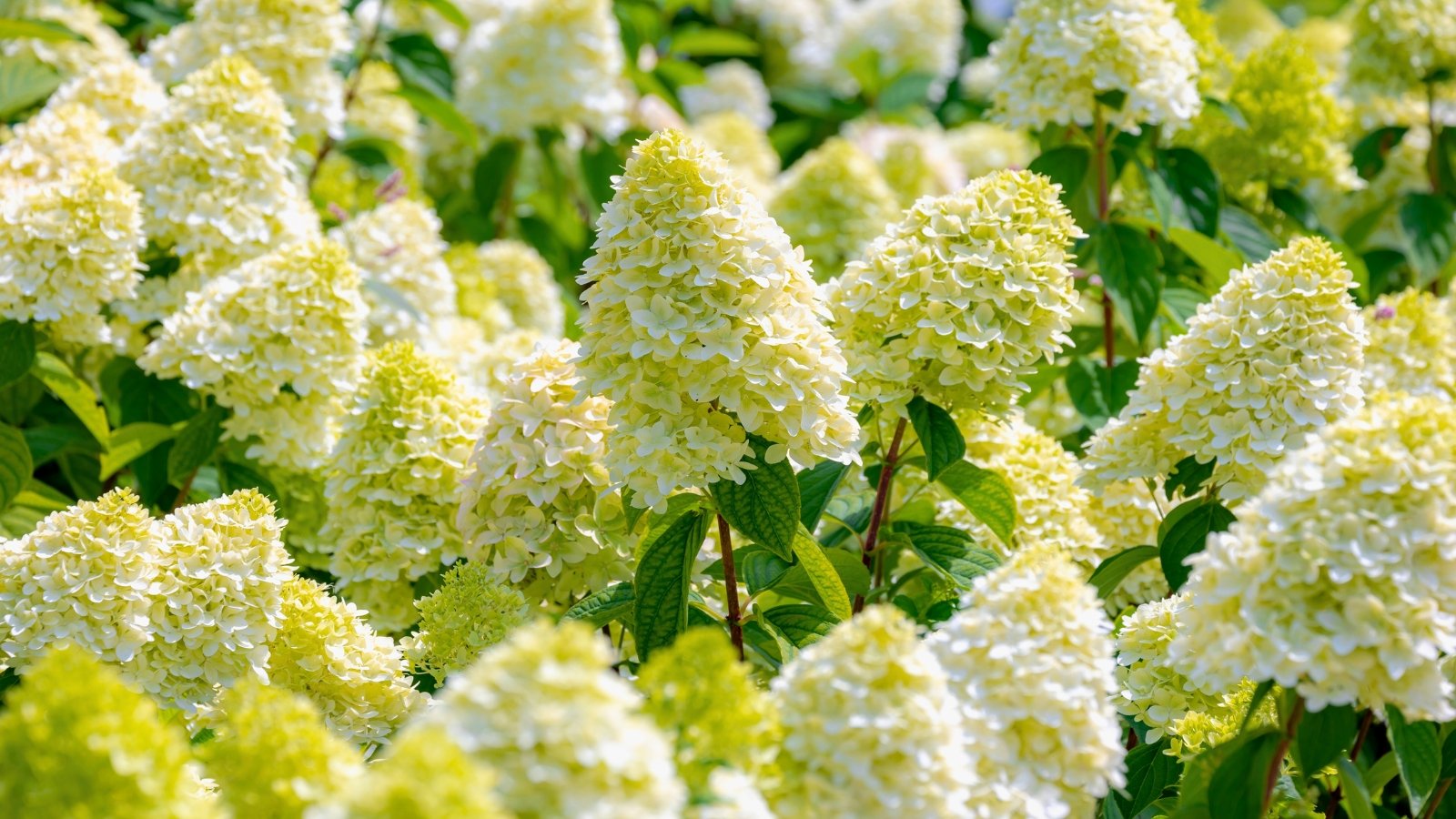


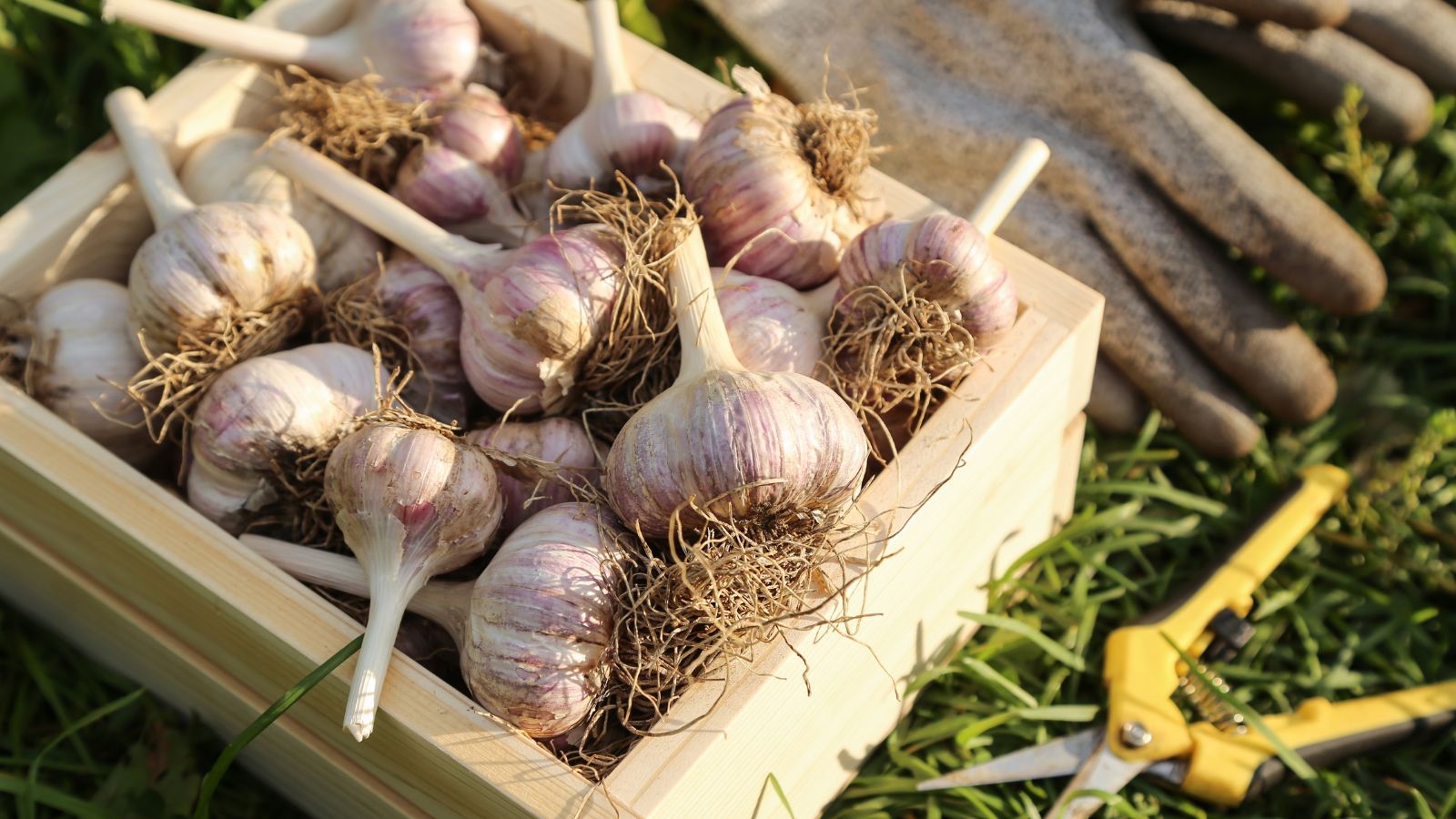
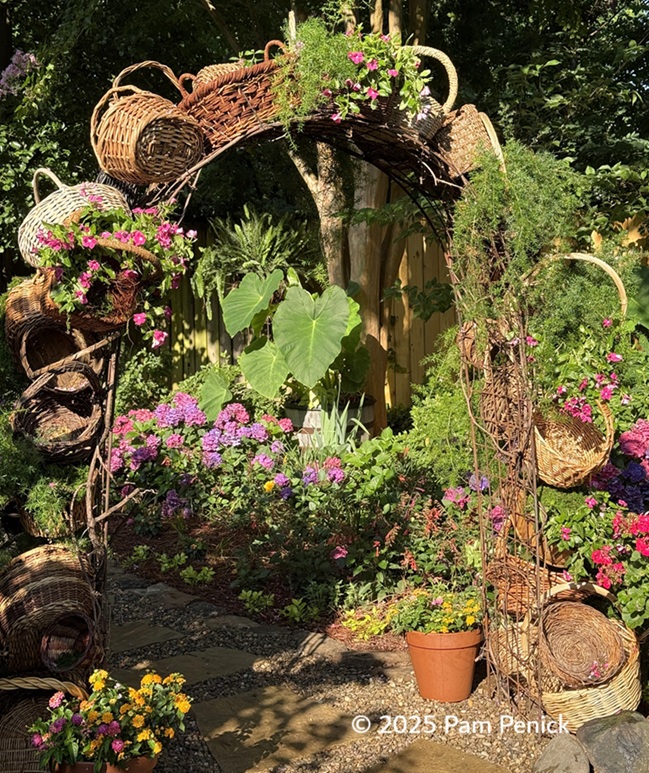
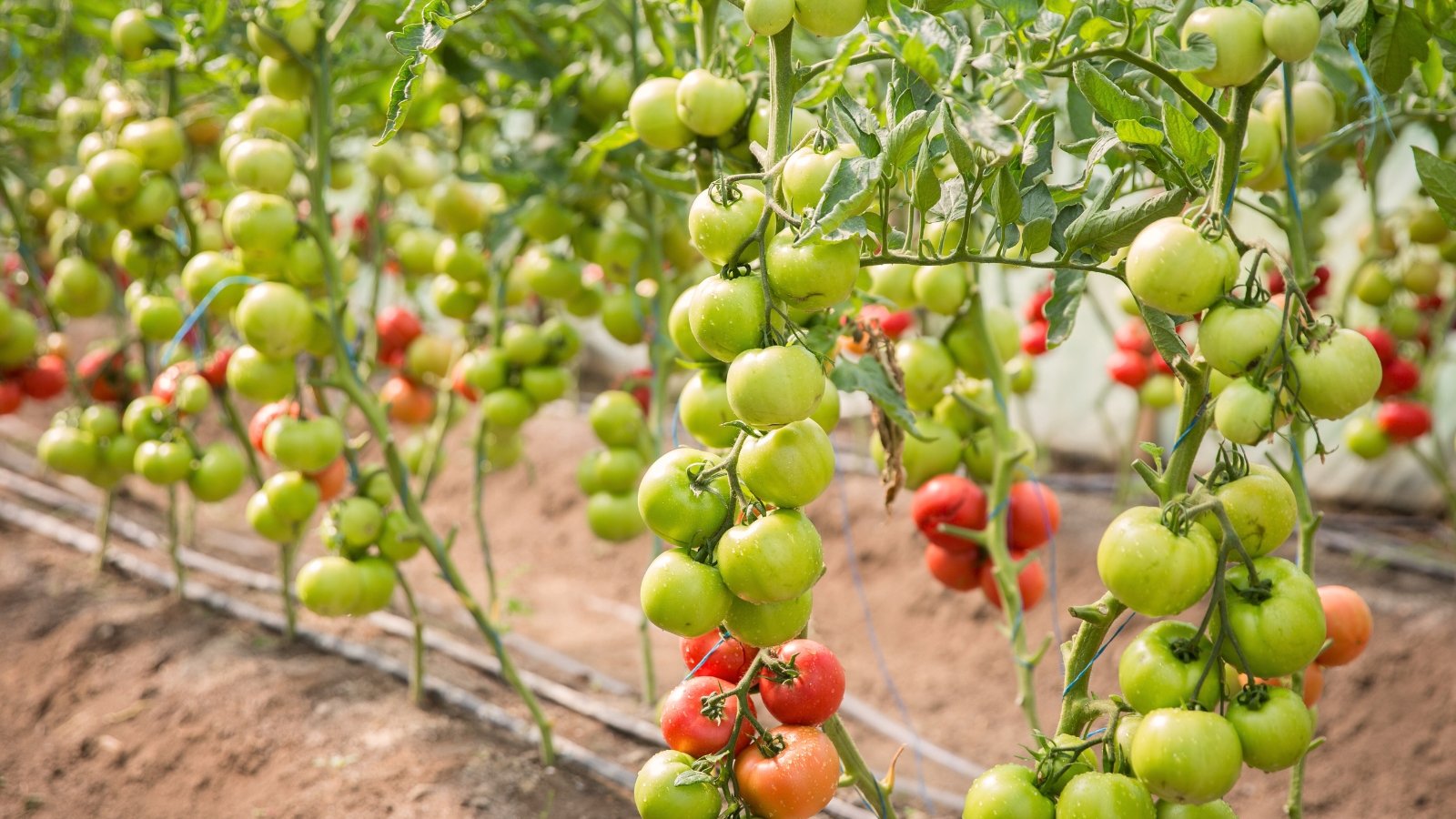















 English (US) ·
English (US) ·  French (CA) ·
French (CA) ·